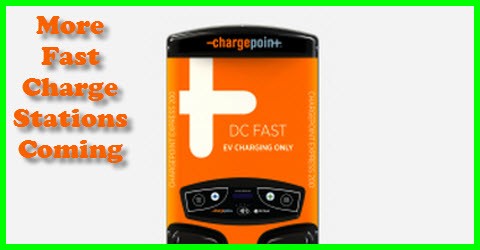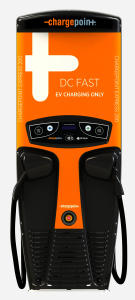Fast Charging Stations About To Pop Up Along Many Major Routs
This week the CEO of American company Charge Point – the developer of the countries largest elecric vehicle charging network says there is a revolution about to happen with the popularity of electric vehicles, s]rooftop solar and storage batteries.
Charge Point chief Pasquale (Pat) Romano is in Australia to participate in a panel discussion about disruptive innovation at the YPO Global EDGE conference in Melbourne this Friday. He is announcing a deal deal between his California-based business and the Brisbane-based EV infrastructure company, Tritium.
The deal will see Tritium supply ChargePoint – which already has a network of more than 21,000 EV chargers around the US – exclusively with its award-winning Veefil DC fast charging stations, to be installed throughout the States.
The Australian-made stations will be installed on major routes across the country, including the express charging corridors on both the east and west coasts of the US that are being built as part of a recent deal between ChargePoint, Volkswagen and BMW.
The 50kW Veefil stations – which in the US will be called DC Fast stations and will be ChargePoint branded – are able to deliver up to 80 miles or 128 kilometers of charge in just 20 minutes, thus removing one of the key barriers to EV uptake: range anxiety.
“These stations can be used by any EV charging equipped with fast charging and will be installed in convenient locations where drivers need them most,” said Romano in statement about the Tritium deal.
“With access to fast charging stations along major routes, drivers can depend on an EV as their only vehicle.”
Romano, who describes Tritium’s fast-charging technology as “by far and away the best product out there,” told RenewEconomy on Wednesday that he believed the “bulk of the world” will have made the switch to electric vehicles within the next 10 years, mostly because it will just make sense: both economically and environmentally.
“It’s a world engineering effort that’s going on,” he said in a telephone interview with RenewEconomy and Tritium CEO David Finn.
“The solar/renewables problem drives battery development – as good scale storage – which is a huge driver of falling battery costs.”
And of course, the arrival of cost effective batteries removes that other great barrier to EV uptake: cost.
“We’re not waiting for a breakthrough here. That’s what’s exciting – you can see it,” Romano said. “You’re going to see a very, very cost-effective (electric vehicle) market in the next few years.”
The original article contains a lot more insights into these exciting developments.




